Portrait of Giovanna degli Albizzi Tornabuoni by Domenico Ghirlandaio
The Portrait of Giovanna degli Albizzi Tornabuoni by Domenico Ghirlandaio captures the beauty of this young women and carries more meaning than one may suspect. The historical significance of this notable work of art from the Early Renaissance reveals insightful keys to Florentine culture, showing the flourishing nature of this 15th century city.
Historical Background:
The artist of this image, Ghirlandaio, would frequently incorporate portraits of his contemporaries in many biblical scenes. This fueled his increase his popularity amongst the wealthy Florentines who were very aware of self portrayal in society. Astonishingly, very few examples of his secular portraits may be found today; the portrait of Giovanna Tornabuoni being one such image. Her idealized portrayal was so breathtaking that it essentially acted as an icon of beauty for young Florentine women.
Before the mid-15th century, independent portraits of women were rarely commissioned. It was far more common to see ruler portraits depicting a husband and wife together. Eventually, in the later part in the 15th century, portraits of females began to rise in their popularity amongst the more affluent Florentine families. 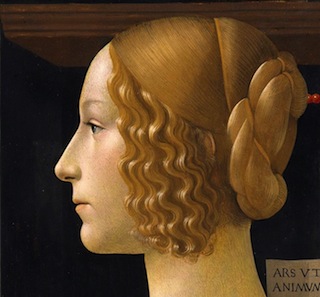
Ghirlandaio deliberately chooses to paint Giovanna a traditional profile pose, which was favored due to its association with ancient coins and medallions. This commonly used profile view links back to the portrait medals that were introduced by Pisanella in the 1430s. The medals reflect the humanist fascination with the classical past that emulates the ancient Roman coins engraved with Caesars strict profile.
The profile view was also used to depict female saints and young brides, both of whom were expected to carry a virtuous nature. The moral rectitude of female sitters is further implied through their upright, almost rigid posture and averted gaze. This particular image shows how young women of that day were expected to display an air of self-restraint.
Around the time of the painting’s creation, the profile portrait was going out of style and only used for special circumstances. Giovanna’s image is an example of such; created posthumously and commissioned by her husband to preserve his wife’s memory after her untimely death.
The Portrait:
Giovanna was born in 1468 into one of Florence’s leading families. In 1486, she married Lorenzo Tornabuoni, whose prominent family was related to the Medici. Unfortunately, Giovanna died while giving birth to her second child, leaving her husband deeply stricken by grief.Lorenzo sought Domenico Ghirlandaio to commission a portrait of his wife in order to commemorate and honor her memory. His selection of Ghirlandaio comes as no surprise as he was one of the master artists of the time and a friend of the family.
Lorenzo gave Ghirlandaio explicit directions as to how he wanted the image of his wife to be portrayed. His love for her is more than apparent even after her death through this display of undying affection and sorrow. He requested that the portrait must reflect her interior as well as capture her exterior beauty. Lorenzo’s vision is made exceedingly apparent in the inscription found on the cartouche in the background of the portrait:
If only art could reproduce the character and spirit! In all the world a more beautiful painting will not be found.
The text contains a double meaning and employs words drawn from an epigram by the poet Martial. One interpretation of this verse refers to Giovanna’s virtues, claiming that they can hardly be reproduced in images. The second meaning exalts the artistic qualities of the painting and expresses the capabilities and power of art.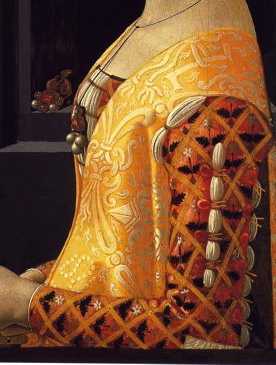
The painting depicts Giovanna in a magnificent garment that has been painstakingly painted to showcase its exquisite detailing. Her gown is comprised of gold brocade with tight, slitted silk sleeves. Her decadent clothing clearly demonstrates the status of her family in Florence, as well as the Tornabuoni family.
Interestingly, her whole figure is portrayed in a fresco in the Tornabuoni Chapel, where she is depicted witnessing the Visitation. The entirety of her luminous gown is visible in this work and it stands out in brilliantly amongst the dark crowd that surrounds her.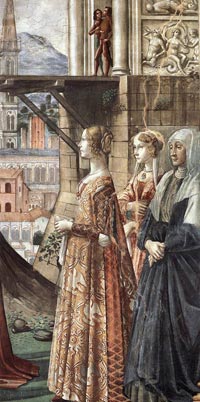
Another notable item she wears in her profile portrait is a valuable piece of jewelry, that draws us in with the large ruby in a gold setting comprised of three glowing pearls. While this hangs around her neck by a delicate cord, there is also another piece of jewelry on the shelf behind the sitter.
An elegant rosary made of red coral beads against a black background lays there. The section of the rosary which dangles from the shelf brings our faze to the strategically placed prayer book, and thereby, emphasizing a rather pious object. This, alongside the note carrying the beautiful message, work together to allude to the beautiful soul of Giovanna.
Domenico Ghirandaio surely lived up to Lorenzo’s expectations in creating an image that would preserve and honor his wife’s memory for centuries. His talents were recognized and praised by many, including Vasari, who noted his ability to realistically capture his sitter’s features.
The Portrait of Giovanna degli Albizzi Tornabuoni shows his skill at communicating his sitter’s grace while capturing her dignity in a remarkable manner. The artistic choices he made to create this portrait bestow it with powerful meaning and give us an insightful view into the world of late 15th century Florence.
*If you liked our latest Chronicle post about Ghirlandaio’s "Portrait of Giovanna degli Albizzi Tornabuoni", let us know! We love to hear your comments here and on our Facebook page. If you haven’t checked out our Facebook page, check us out and say hello! It means so much to us to hear back from our Fabric-Store friends. Thanks!
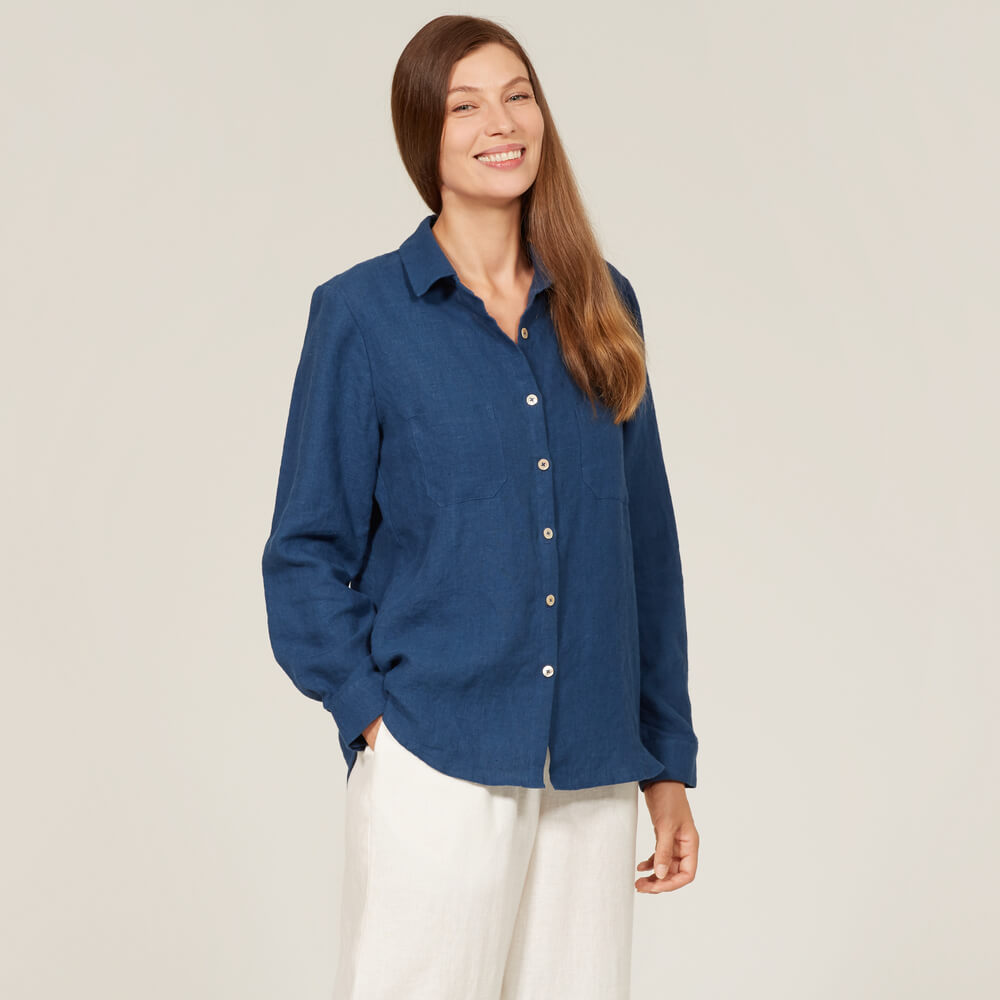

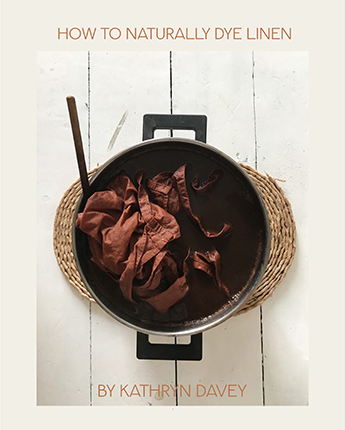
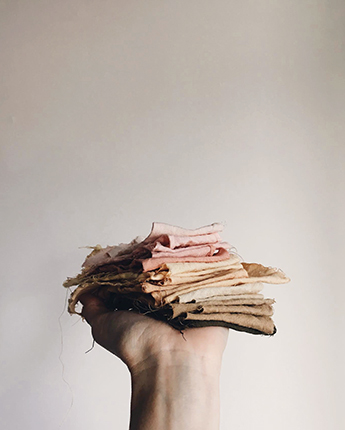

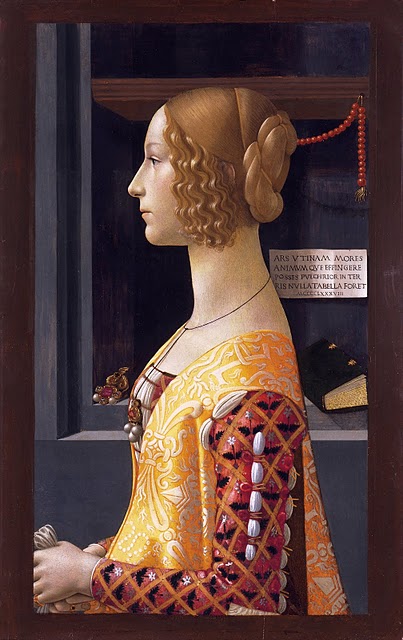
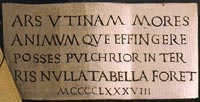

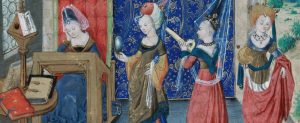
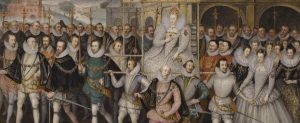
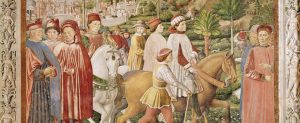
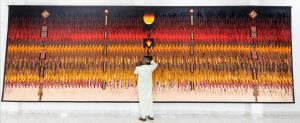




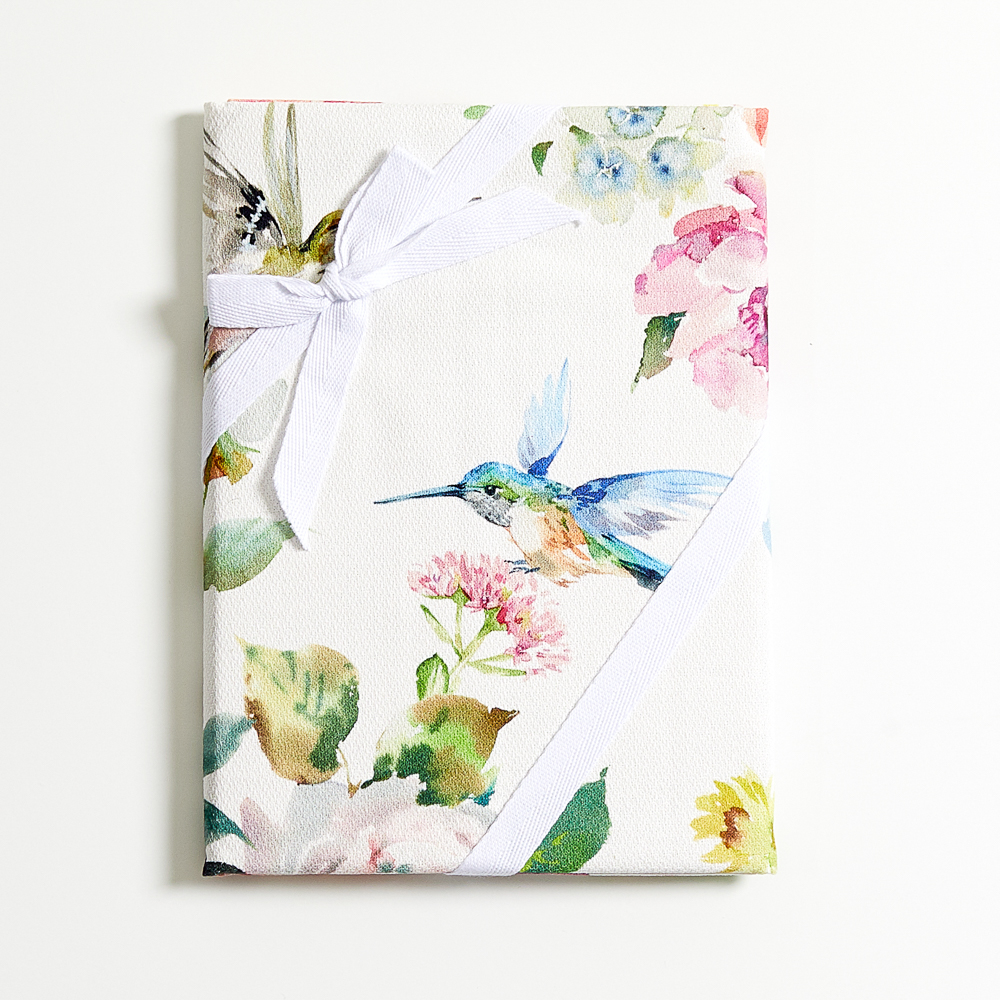
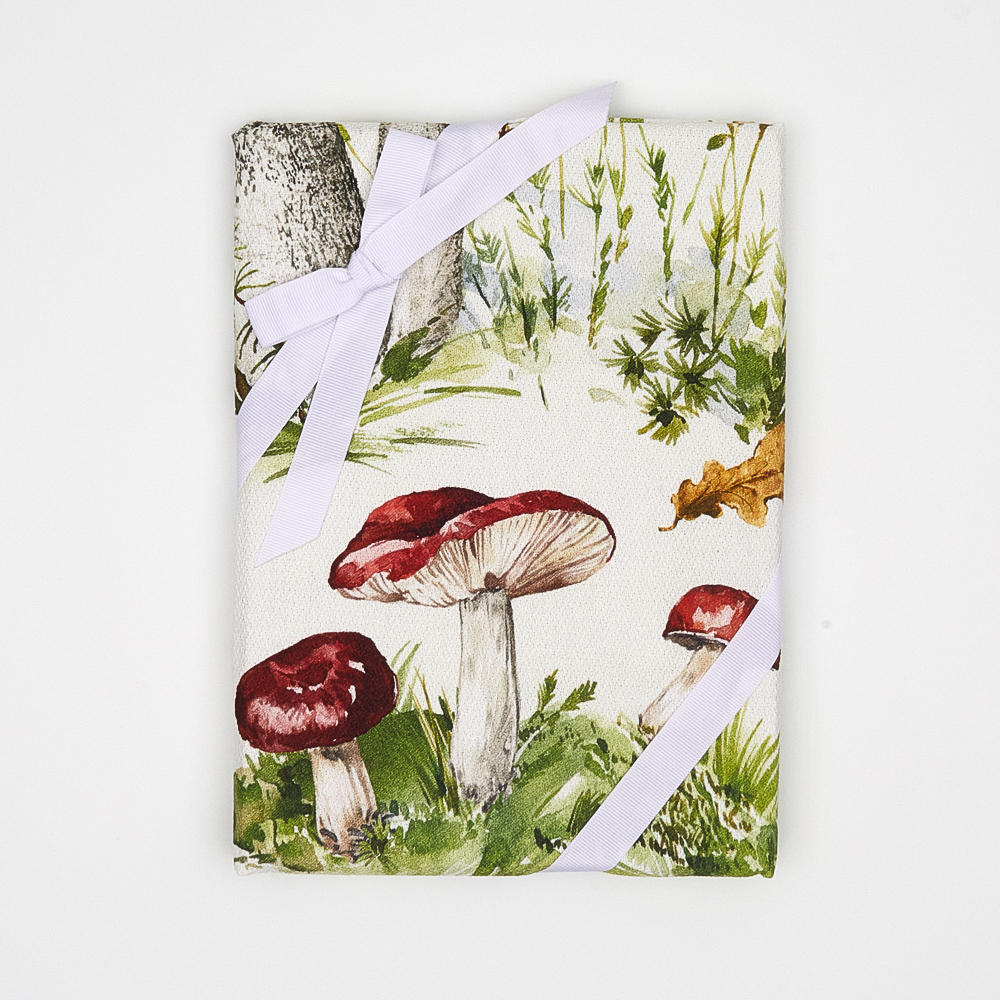

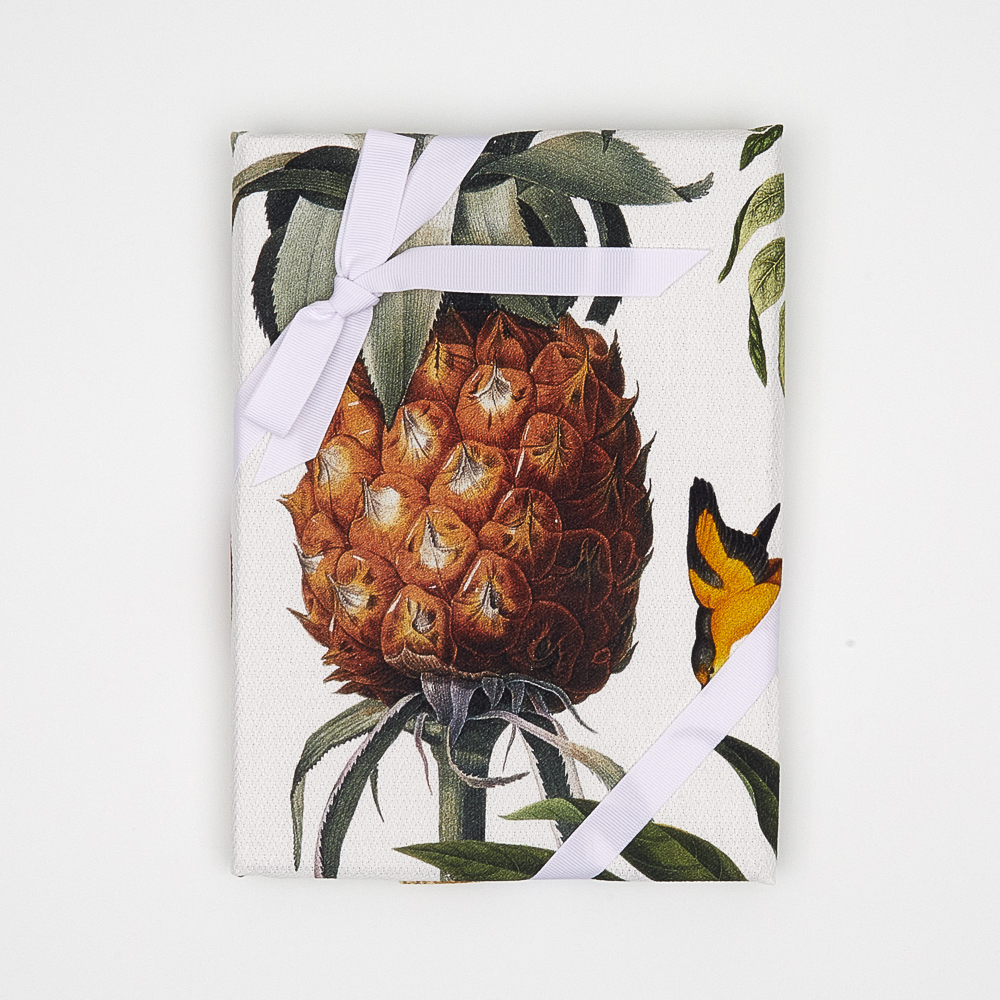






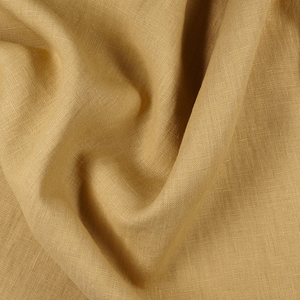
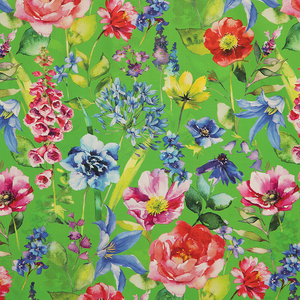
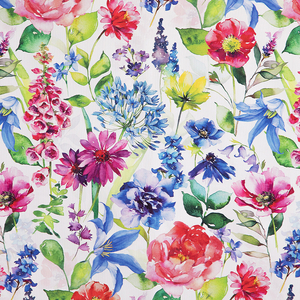
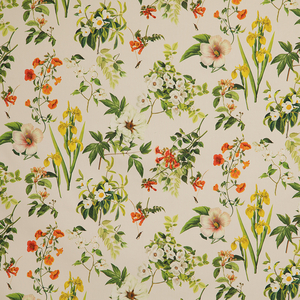
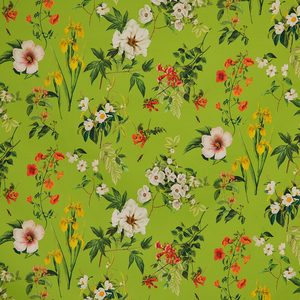
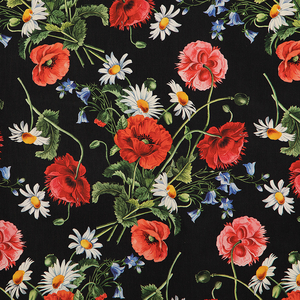
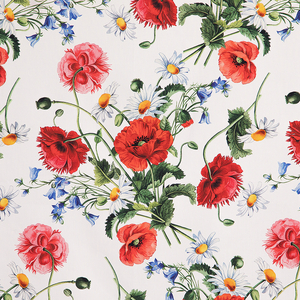
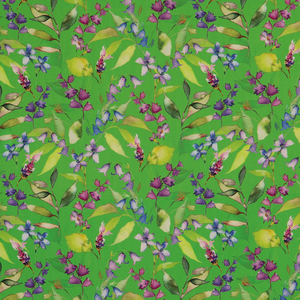
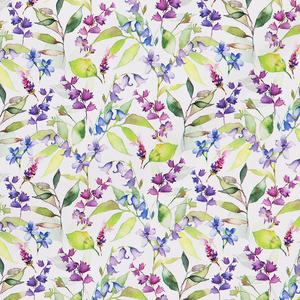
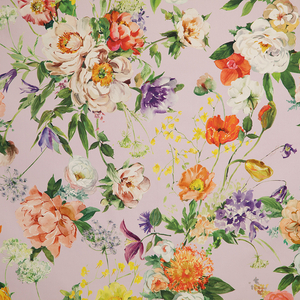
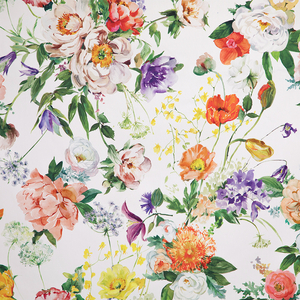






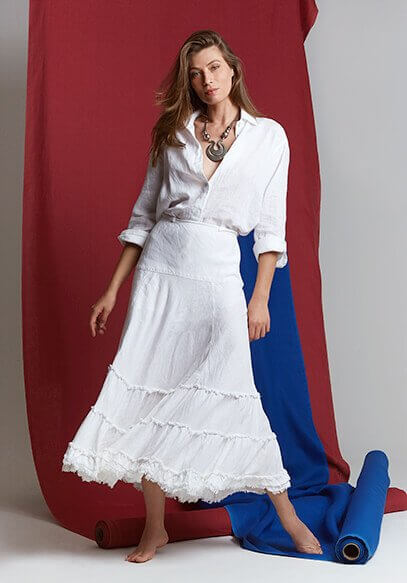
7 Comments
Morgan
“Astonishingly, very few examples of his secular portraits may be found today” — not so astonishing, when you consider Savonarola’s 1497 “Bonfire of the Vanities,” three years after Ghirlandaio’s death. A lot of Florentine portraits probably went into those bonfires.
Loreen
Lovely, this article has something for everyone…fashion, faith, love, art and beauty. Thank you for taking the time to share…
Debi Hacker
Lovely article – really makes me yearn to start another dress project!
sdBev
A wonderful evaulation of an iconic painting! Such deep analysis of art is uncommon today and greatly appreciated by myself. Thank you.
Charly
Great post!
nicole novembrino
Thanks! That is so true. They tend to skip over artworks like this in most courses.
Haley
Nice article, not something you’d typically learn in a college art history course anymore!